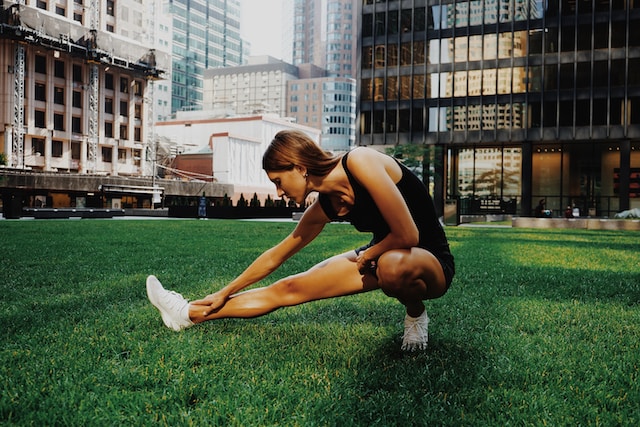Worst Fitness Advice

Some fitness advice is so bad it is cringeworthy.
The trouble is that – on the surface – it seems legit.
This page highlights commonly bad fitness advice and suggests alternatives for each. Remember that health and fitness is highly individual. What makes for the worst fitness advice for one person, might well be solid for another. I’d also recommend that anyone not active at all just get started with moderate exercise. After all, any movement is better than none.
Below are the most common pieces of awful fitness advice. Each can be considered “worst” depending on context and application:
Worst Fitness Advice #1: No Pain, No Gain
This adage suggests that you need to push through pain to see results.
While it’s true that you need to challenge yourself to improve, pain is often your body’s way of signalling that something is wrong. Ignoring pain can lead to serious injuries and setbacks in your fitness journey.
For people lifting to bulk up muscles, this otherwise bad fitness advice has an element of truth.
Everyone else should avoid pain, though pushing yourself a little bit harder can work wonders for your fitness.

Terrible Advice for Fitness Fans #2: You Can Out-Exercise a Bad Diet
Many people believe they can eat whatever they want – as long as they work out hard enough.
However, nutrition plays a crucial role in fitness. Neglecting a healthy diet will impede your progress. It’s important to find a balance between exercise and nutrition.
In fact, a balanced diet will boost your workouts. Cutting out sugar, excessive carbs and alcohol will definitely put a spring into your step the next time you hit the gym.
Bad Health and Fitness Advice 3: Spot Fat Reduction is Possible
The idea that you can target fat loss in specific areas of your body through exercises like crunches for belly fat or arm exercises for flabby arms is largely a myth.
While targeted exercises can strengthen and tone muscles in those areas, fat loss is more complex and involves reducing overall body fat through a combination of diet and exercise.
A consistent mix of cardio and resistance exercise, along with a healthy diet to shed excess fat is a far better starting point.

Worst Fitness Advice #4: Lifting Weights Makes Women Bulky
This myth discourages many women from incorporating strength training into their fitness routine. In reality, strength training will help everyone. It will tone muscle, increase metabolism, and improve body composition.
Women typically have less muscle tissue and produce lower levels of testosterone than men, making it unlikely for them to bulk up in the same way.
I’d flip this terrible advice 360 degrees. You will never get the full benefits of fitness without some resistance training as part of your routine.
Awful Fitness Advice #5: More Exercise is Always Better
Overtraining can lead to burnout, injuries, and decreased performance.
Rest and recovery are essential components of any well-rounded fitness plan. It’s important to listen to your body and incorporate rest days to allow for muscle recovery and growth.
This can involve doing different forms of exercise on different days. For example, interval training on your treadmill twice a week, with resistance training or HIIT mixed in.

Worst Fitness Advice #6: Cardio is the Best Way to Lose Weight
While cardiovascular exercise or ‘cardio’ is important for heart health and helps with weight loss, it’s not the only or even the best way to lose weight.
Strength training and high-intensity interval training (HIIT) are highly effective, especially for building muscle and increasing resting metabolic rate.
This will depend on your body composition, fitness level, age, and personal factors. A single session with a personal trainer will help you plan the best route to fitness for your individual needs.
Fitness Advice to Ignore #7: Supplements Can Replace Workouts or Healthy Eating:
Many people believe taking fitness or weight loss supplements can replace the need for regular exercise or proper nutrition.
While certain supplements may provide benefits when used correctly, they cannot replace the foundational need for a healthy diet and regular physical activity.
Low levels of many vitamins and minerals are health risks. Blood tests will show you what you are lacking before you waste money on things which are not needed.

Wrapping Up: There is no One Size Fits All in Fitness (But a Lot of Bad Advice!)
Remember, fitness advice should always be tailored to the individual.
What works well for one person may not be suitable for another. It’s important to consider personal goals, fitness levels, and any medical conditions when developing a fitness plan.
Consulting with fitness and health professionals can provide personalised guidance.
My final thought – don’t let bad advice stop you from enjoying the type of activities you love. Enjoying your workouts is a key factor in whether you’ll last after that initial spurt of motivation has disappeared.
More Popular Pages this Month: